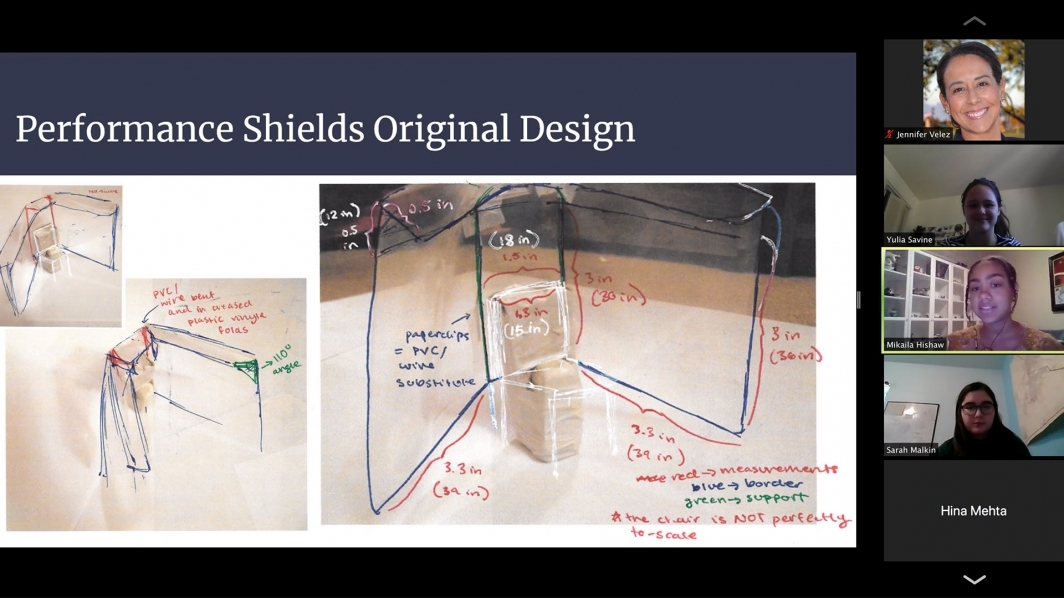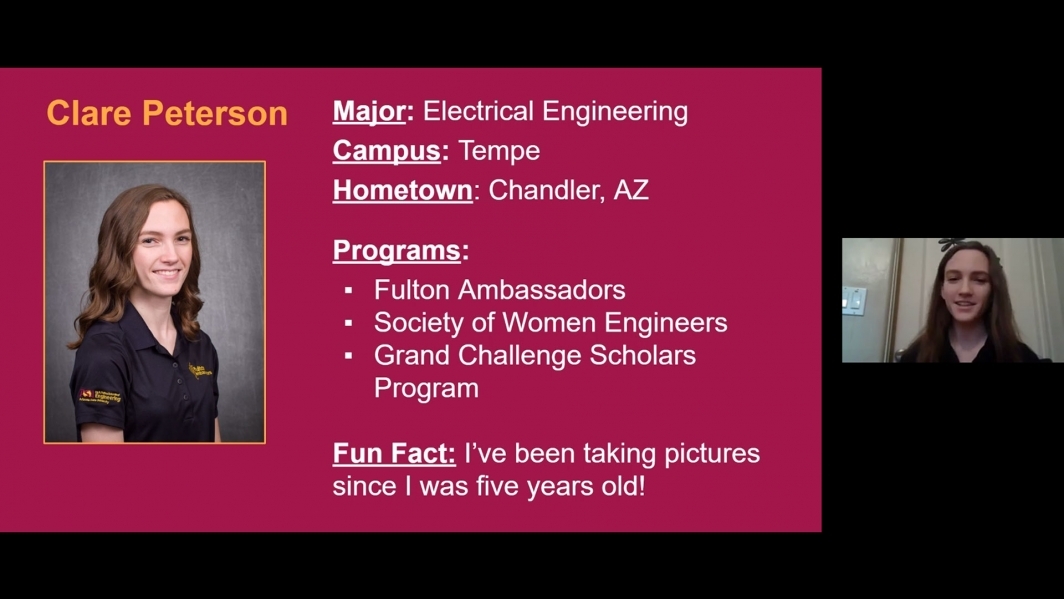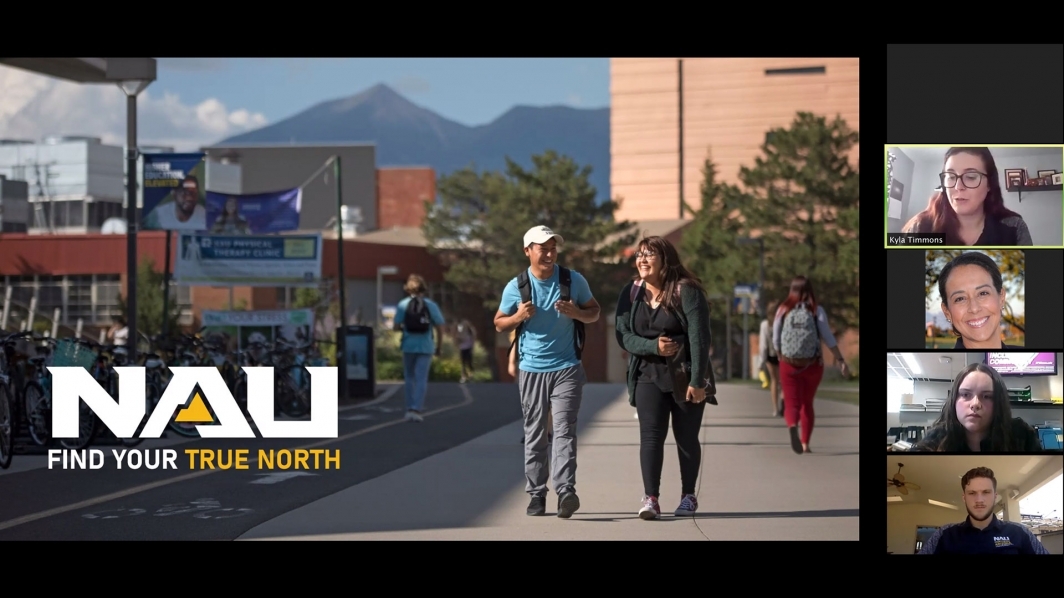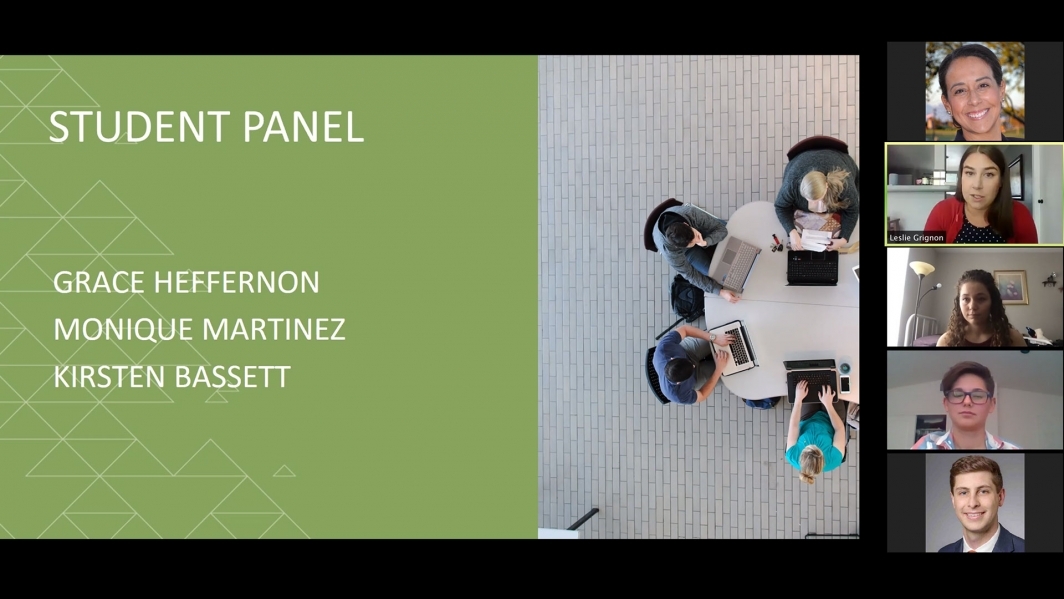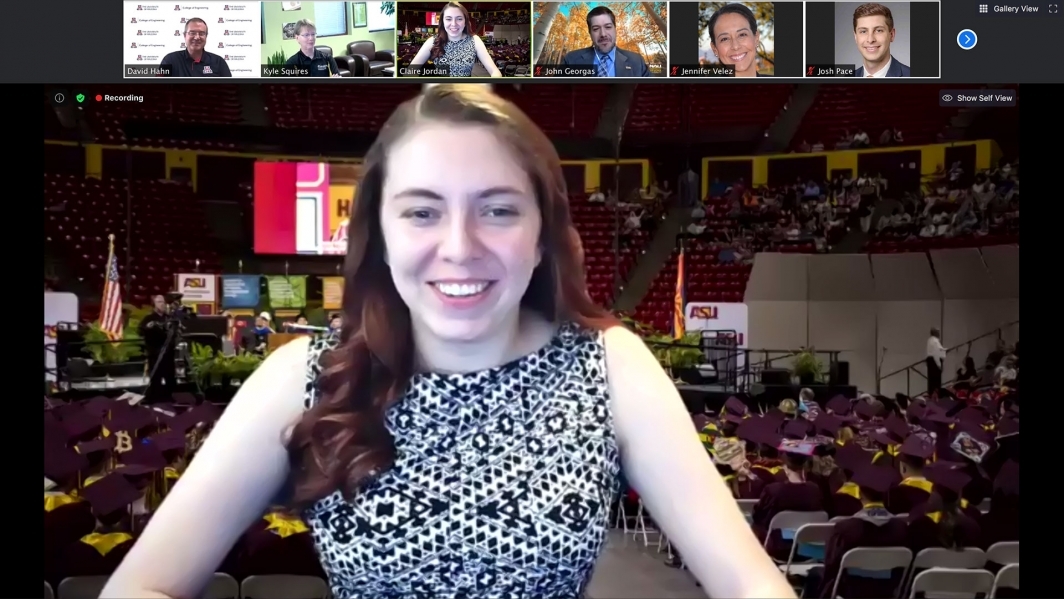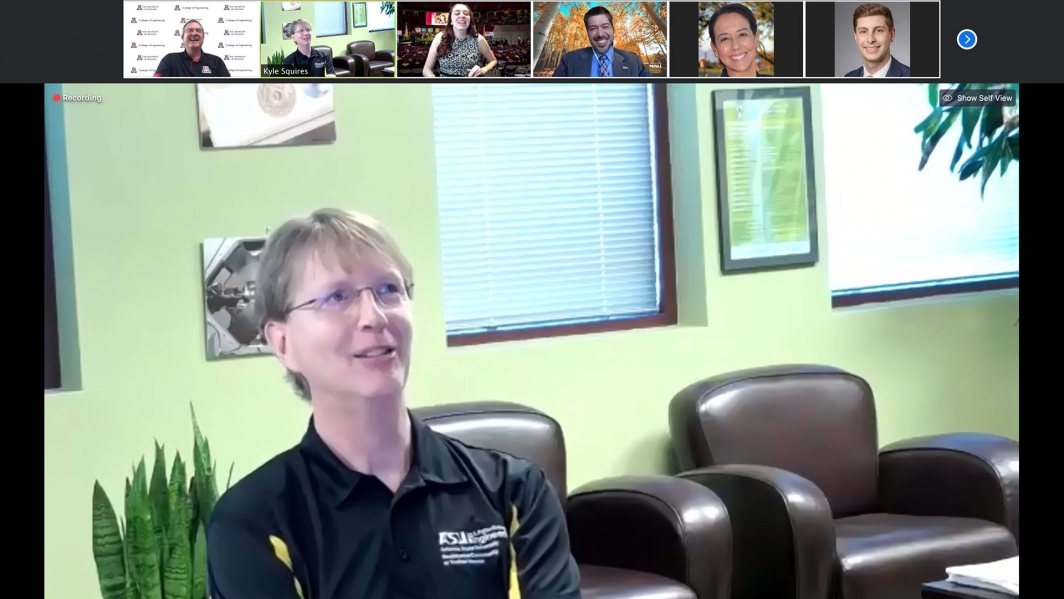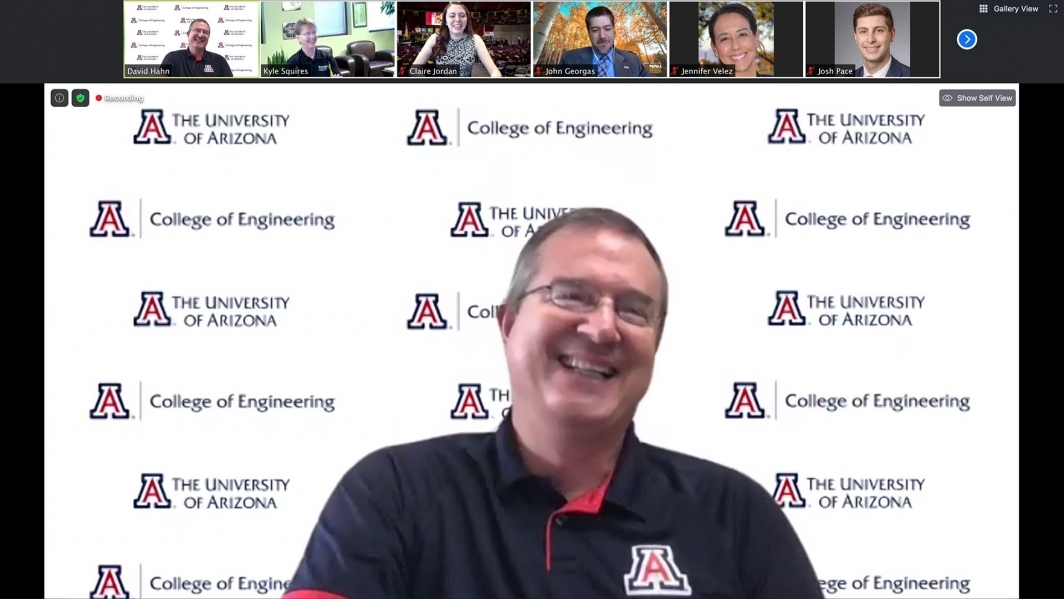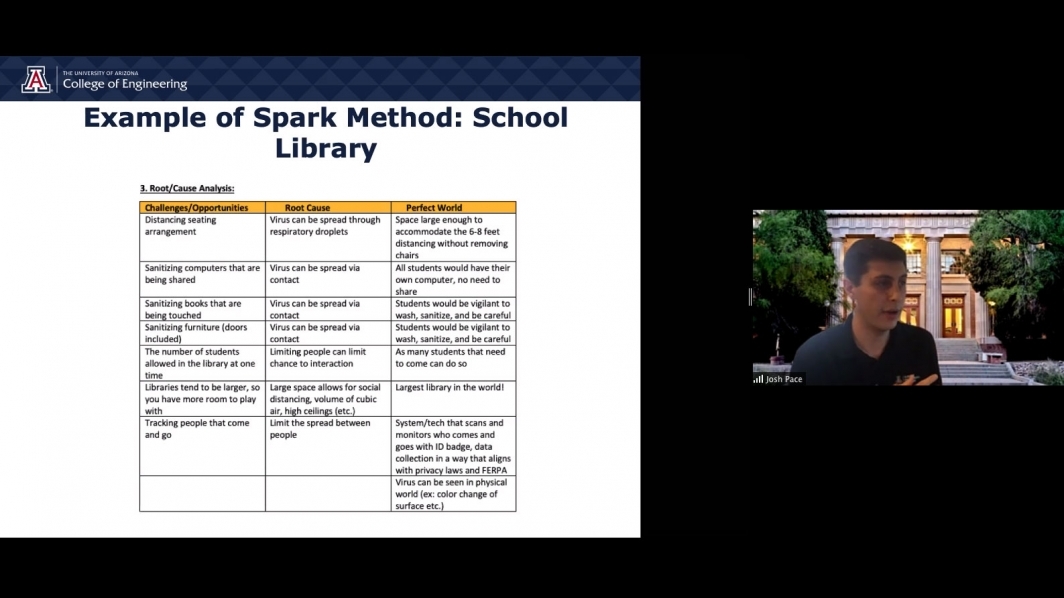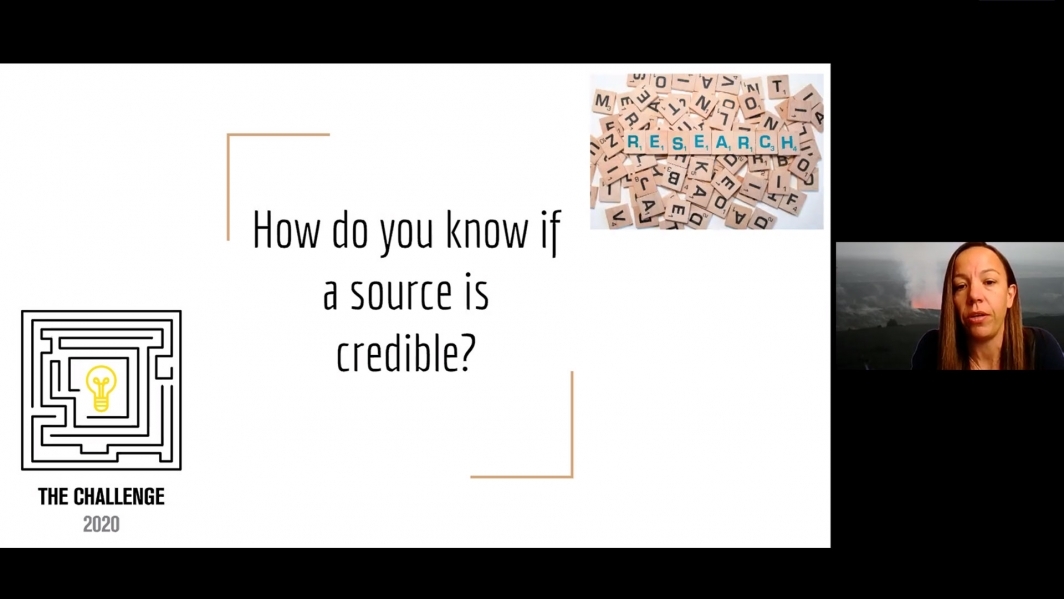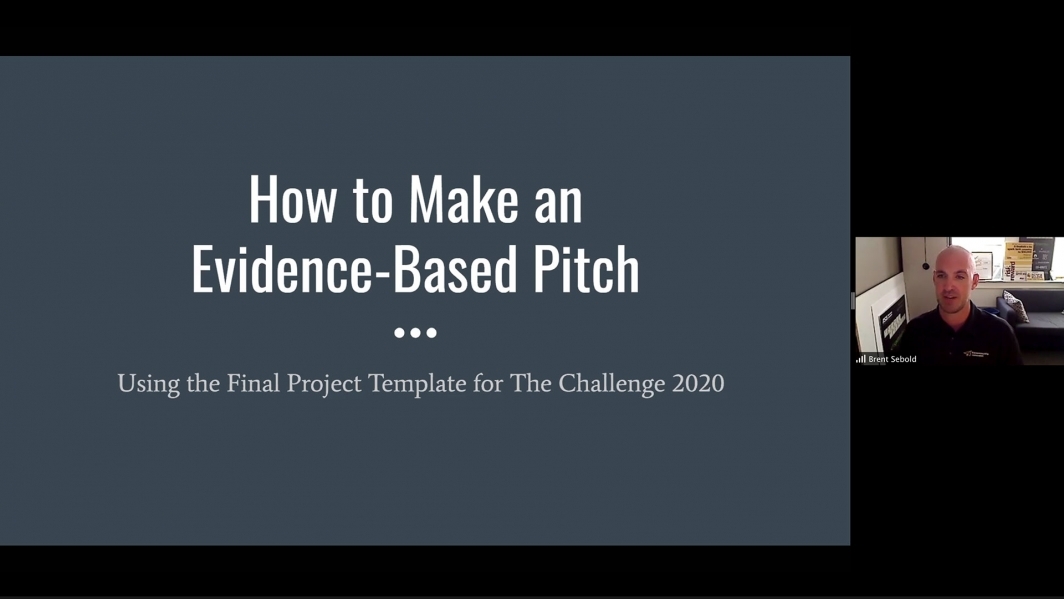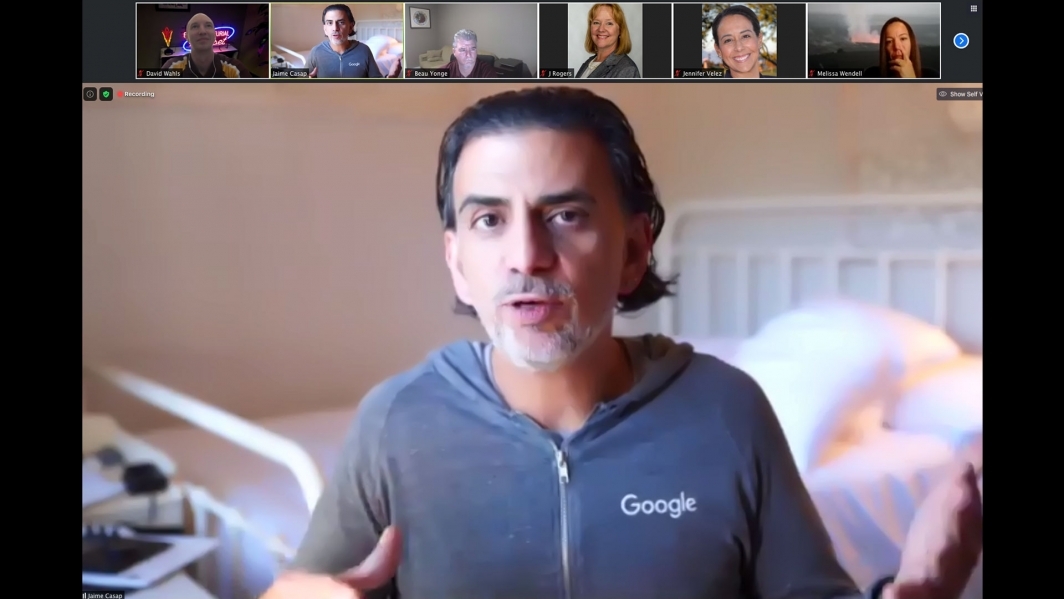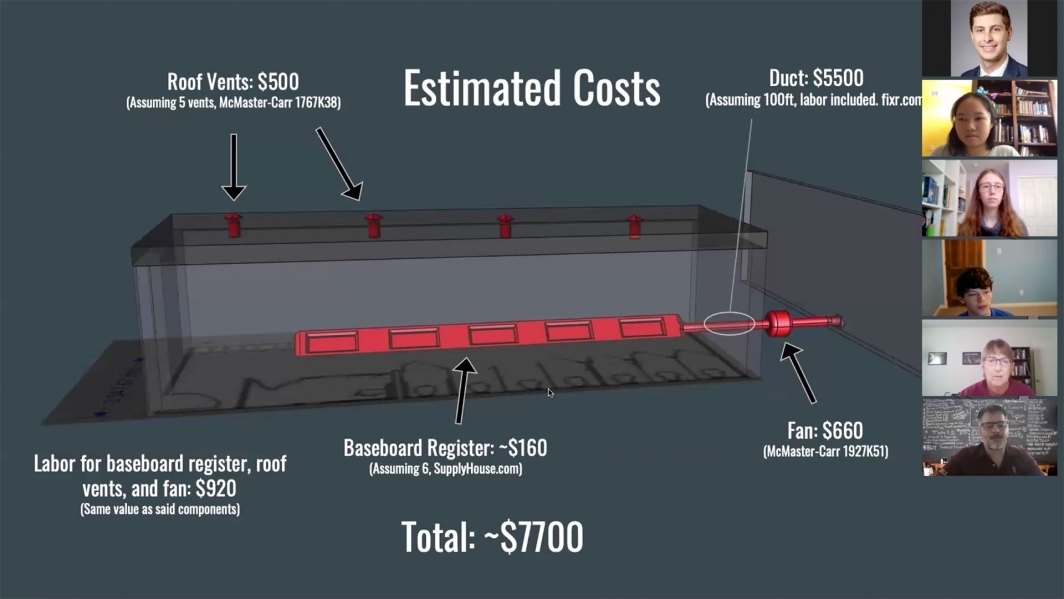Teens design back-to-school strategies amid COVID-19 pandemic

A student brainstorms ideas on a dry erase board. In place of in-person outreach activities this summer, The Challenge 2020 virtual engineering design competition tasked Arizona high school students to develop solutions for social distancing at their schools as they prepare to return to classes in the fall. Photographer: Marco-Alexis Chaira/ASU
Engineering is a method of problem-solving that can help address a variety of challenges — even how students can safely and effectively return to school during the coronavirus pandemic.
COVID-19 was the catalyst to bring high school students from across Arizona together in a virtual event to learn engineering design thinking skills. The Ira A. Fulton Schools of Engineering at Arizona State University hosted an educational outreach activity called The Challenge 2020 in partnership with the University of Arizona College of Engineering and Northern Arizona University College of Engineering, Informatics, and Applied Sciences.
“A statewide, tri-university online outreach event like The Challenge is an excellent opportunity to bring together a more diverse group of students to learn from the top faculty members and education experts in our state,” said Kyle Squires, dean of the Fulton Schools. “We are proud to work together with our university partners to show Arizona high school students how they can make a difference through engineering during this challenging time.”
The June 18–23 event drew more than 90 rising juniors and seniors from Arizona and several other states to work as teams to develop social distancing solutions for schools.
The students worked with education stakeholders, health experts, university faculty members and current engineering students to see what it’s like to be an engineer.
“In the upcoming school year, our schools, teachers and students will face unparalleled challenges,” said Kathy Hoffman, state superintendent of public instruction, during her opening keynote address for The Challenge.
“I know the solutions (participants) generate can impact how students across the state experience learning for months and years to come,” Hoffman said.
Addressing a daunting challenge
Taking precautions to stem COVID-19 infection isn’t the only issue the student teams had to consider. Hoffman and other experts identified wider school operations, social and emotional issues, accessibility and unequal access to technology as other barriers that factor into returning to school in the fall.
“Contemporary engineering demands a systems perspective: Working directly with a team of experts will tangibly show that engineering demands teamwork and it'll convey the breadth and depth of the expertise needed to build effective solutions to complex problems,” said John Georgas, interim dean of the NAU College of Engineering, Informatics, and Applied Sciences.
Claire Jordan, who graduated from ASU with a master’s degree in mechanical engineering in May, helped create the COVID-19 topic for the event.
“I really wanted students to learn engineering in a way that is genuinely applicable to their lives,” said Jordan, who was highly involved in organizing K-12 outreach activities as an ASU undergraduate and graduate student. “I think students learn a lot more when they work on something personally affecting them.”
Learning and applying engineering design thinking
After learning about the engineering design process from industry engineer and UA Lecturer Ken George — who gave them the same sort of lecture a first-year university engineering student would attend — student teams were tasked with defining a COVID-19 social distancing problem and how it affects their chosen school location.
Over the next several days, students developed and refined their solutions. Josh Pace, a December 2019 UA graduate who studied biomedical engineering with a minor in electrical and computer engineering, taught the ASU Spark problem-solving process and how to collect all relevant information in a professional-style engineering notebook, an important tool for engineers.
"I always like to tell people that if they want to pursue a career where they can make a difference, they'll find a home in engineering," said David W. Hahn, the Craig M. Berge Dean of the UArizona College of Engineering. "In The Challenge, a new generation of students will see the impact engineers can make when they create a solution to a real-world problem."
Teams were judged on their creativity, presentation skills, ability to define the problem, citing relevant sources, documenting their solutions and addressing the possible barriers to implementation. The judging panel included ASU and UArizona faculty members as well as retired industry professionals from Honeywell Aerospace and Intel. Of the 25 starting teams, 21 teams made it to the final judging.
A range of relevant ideas
The teams addressed a wide range of locations around their schools and included designs that repurposed existing equipment or created completely new technologies.
The top solutions impressed Joshua Loughman, the lead judge for The Challenge, a Fulton Schools lecturer and assistant director of the ASU Engineering Projects in Community Service program.
“Teams were careful to consider not only the technical requirements of each challenge but also the impacts on people and wider systems,” Loughman said. “They combined excellent technical and design ideas with stakeholder interviews, rapid system modeling, early stage prototyping and integrating a systems-view into their project. These are characteristics of exceptional design teams.”
First-place team Cuckoo Industries — Julia Norris and Madeleinne Tan from Chandler Preparatory Academy in the Phoenix metro area and Kevin Cotellesso, Norris’ cousin — developed a solution for school restrooms. Restrooms are often crowded spaces with poor ventilation, so the team focused on improving air circulation.
Modeled after a spray paint downdraft booth, the team’s air exchanger pushes potentially contaminated air down and away from the nose and mouth and replaces it with air from the outside.
“They identified the unique requirements that would be necessary for a restroom facility with existing fixtures, and limited opportunity to modify the space,” said Lysbeth Lieber, a retired Honeywell Aerospace mechanical engineer and judge for The Challenge. Lieber was also impressed that the team recognized the need to use computational fluid dynamics to accurately design the system.
A hallway traffic management solution earned second place. Team No Rest For The Students — Carolyn Heinzer, Avneet Kaur and Ailsa Watt from BASIS Peoria — identified crowded school corridors as a health hazard during the pandemic. Their solution involved changing class schedules and a system of one-way hallway traffic.
In third place, Team Musicians — Mikaila Hishaw, Sarah Malkin and Yulia Savine from University High School in Tucson — designed indoor and outdoor solutions for orchestra classes. To block potential virus spread indoors, they developed performance shields for individual students and brass instrument cloth covers to block airborne saliva particles.
Pace awarded two teams for outstanding engineering notebooks that displayed excellent documentation and organization. The judges also gave two innovation awards for teams that thought outside of the box — coming up with ideas for an ultraviolet exosuit and a virtual reality classroom solution.
The Challenge’s virtual format was also an inspiration for stakeholders.
“This was such a great opportunity for me to see how an engineering project can be done remotely and online,” said Mel Wendell, an engineering teacher at Mountain Pointe High School in Phoenix who mentored several teams. “It gave me inspiration on how to tackle the new normal of education.”
Encouraging students to pursue higher education
Along with learning about COVID-19 with engineering, education and health stakeholders, participants in The Challenge 2020 were inspired to learn “21st-century skills” such as problem-solving, critical thinking, creativity and especially “how to learn.” This lesson came from Google’s Education Evangelist Jaime Casap, who is also an Arizona State University alumnus.
The high schoolers watched video messages from a variety of industry professionals and university faculty members who talked about their journeys as engineers and explained the types of projects they work on.
Through recruitment presentations and accounts from current engineering majors, The Challenge participants also learned what it’s like to be an engineering student at ASU, UA and NAU.
“The world, especially today, needs more engineers to address the challenges facing our society,” said James Collofello, Fulton Schools vice dean of academic and student affairs and professor of computer science and software engineering. “Arizona is fortunate to have three universities with strong engineering programs. Engaging students statewide with the combined resources of all three schools provides an optimal learning environment.”
The Challenge will continue to be an engineering education outreach staple in years to come, with hosting rotating among each of the three major Arizona universities.
Watch keynote and expert presentations, "coffee chat" videos by industry professionals and engineering faculty members and more on The Challenge 2020 website.
More Science and technology

Applied Materials invests in ASU to advance technology for a brighter future
For nearly 60 years, global giant Applied Materials has been hard at work engineering technology that continues to change how…

Meet ASU engineering students who are improving health care, computing and more
Furthering knowledge of water resource management, increasing the efficiency of manufacturing point-of-care health diagnostic…

Turning up the light: Plants, semiconductors and fuel production
What can plants and semiconductors teach us about fuel production?ASU's Gary Moore hopes to find out.With the aim of learning how…


